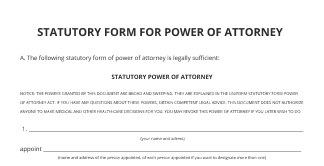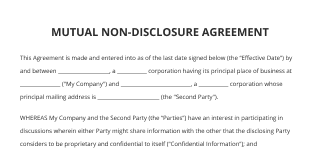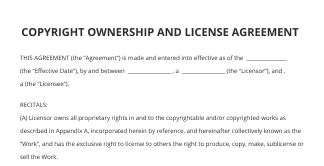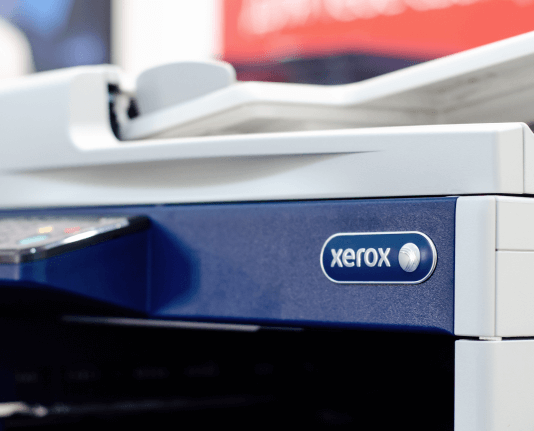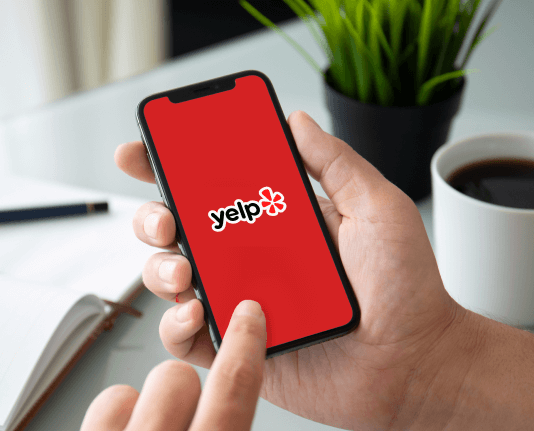Créez Une Facture Pour Graphiste Indépendant En Planification Sans Effort
Faites avancer votre entreprise avec la solution de signature électronique airSlate SignNow
Ajoutez votre signature juridiquement contraignante
Intégrez via l'API
Envoyez des documents conditionnels
Partagez des documents via un lien d'invitation
Gagnez du temps avec des modèles réutilisables
Améliorez la collaboration d'équipe
Découvrez les signatures électroniques airSlate SignNow en action
Solutions airSlate SignNow pour une meilleure efficacité
Les avis de nos utilisateurs parlent d'eux-mêmes






Pourquoi choisir airSlate SignNow
-
Essai gratuit de 7 jours. Choisissez le forfait dont vous avez besoin et essayez-le sans risque.
-
Tarification honnête pour des forfaits complets. airSlate SignNow propose des abonnements sans frais supplémentaires ni frais cachés lors du renouvellement.
-
Sécurité de niveau entreprise. airSlate SignNow vous aide à respecter les normes de sécurité mondiales.

Facture pour graphiste indépendant en planification
Créer une facture professionnelle pour un graphiste indépendant est essentiel pour maintenir un flux de revenus fluide. Cependant, le processus peut prendre du temps, surtout lorsqu'il s'agit de plusieurs clients et projets. Utiliser airSlate SignNow peut rationaliser votre facturation, rendant plus facile la gestion des documents et la réception des paiements de manière efficace.
Étapes pour la facture de graphiste indépendant en planification
- Ouvrez le site airSlate SignNow dans votre navigateur préféré.
- Inscrivez-vous pour un essai gratuit ou accédez à votre compte existant.
- Sélectionnez le document que vous devez signer ou choisissez-en un nouveau à télécharger.
- Si vous prévoyez d'utiliser ce document à l'avenir, convertissez-le en un modèle réutilisable.
- Modifiez le fichier téléchargé en insérant des champs remplissables ou toute information nécessaire.
- Ajoutez votre signature et désignez des zones pour que les destinataires signent.
- Poursuivez en cliquant sur 'Continuer' pour configurer et envoyer votre invitation à la signature électronique.
En tirant parti d'airSlate SignNow, les entreprises peuvent gérer efficacement leurs processus de signature de documents de manière rentable. La plateforme offre un retour sur investissement remarquable grâce à ses fonctionnalités complètes adaptées aux petites et moyennes entreprises sans coûts cachés.
Avec un support client exceptionnel 24/7 disponible pour tous les plans payants, airSlate SignNow garantit que les utilisateurs reçoivent de l'aide quand ils en ont besoin. Commencez à rationaliser votre facturation dès aujourd'hui en vous inscrivant à airSlate SignNow !
Comment ça marche
Fonctionnalités airSlate SignNow appréciées par les utilisateurs
Obtenez des signatures juridiquement contraignantes dès maintenant !
FAQ graphic design lance invoice
-
Quelles fonctionnalités airSlate SignNow propose-t-il pour gérer une facture de graphiste indépendant en planification ?
airSlate SignNow offre une variété de fonctionnalités spécialement conçues pour gérer les factures de graphistes indépendants en planification, notamment des modèles personnalisables, des capacités de signature électronique et le suivi des documents. Ces fonctionnalités rationalisent le processus de facturation, vous permettant d'envoyer et de recevoir des paiements efficacement. Vous pouvez également accéder à toutes vos factures en un seul endroit, ce qui facilite l'organisation. -
Comment puis-je créer une facture pour graphiste indépendant en planification avec airSlate SignNow ?
Créer une facture pour graphiste indépendant en planification dans airSlate SignNow est simple. Commencez par choisir l'un de nos modèles de facture personnalisables adaptés aux graphistes. Vous pouvez facilement saisir vos services, tarifs et informations sur le client, puis l'envoyer pour signature électronique directement via la plateforme. -
AirSlate SignNow est-il rentable pour les freelances qui doivent envoyer des factures ?
Oui, airSlate SignNow est une solution rentable pour les freelances souhaitant envoyer des factures. Il propose des plans tarifaires adaptés à divers besoins commerciaux sans compromettre les fonctionnalités essentielles. Avec airSlate SignNow, vous pouvez gérer tous vos besoins en facturation et signature électronique dans un seul package abordable. -
Quels sont les avantages d'utiliser airSlate SignNow pour les factures de graphistes indépendants en planification ?
Utiliser airSlate SignNow pour les factures de graphistes indépendants en planification offre de nombreux avantages. Cela améliore l'efficacité du flux de travail en vous permettant d'envoyer, de signer et de stocker des documents en un seul endroit. De plus, la plateforme garantit la sécurité et la conformité, vous offrant une tranquillité d'esprit lors de la gestion de vos documents financiers. -
Puis-je intégrer airSlate SignNow avec d'autres outils que j'utilise en tant que graphiste indépendant ?
Absolument ! airSlate SignNow propose des intégrations transparentes avec des outils et plateformes populaires que les freelances utilisent couramment, tels que les logiciels de comptabilité, les outils de gestion de projets et les applications de messagerie. Cette polyvalence vous permet d'incorporer airSlate SignNow dans votre flux de travail existant pour gérer vos factures de graphiste indépendant en planification. -
Quelle est la sécurité de mes informations lors de l'utilisation d'airSlate SignNow pour les factures ?
airSlate SignNow privilégie la sécurité de vos informations en mettant en œuvre des mesures de sécurité robustes, notamment le chiffrement de bout en bout et le stockage sécurisé des données. Lors de la création et de l'envoi de votre facture de graphiste indépendant en planification, vous pouvez faire confiance à la protection de vos données sensibles contre tout accès non autorisé. -
Quels types de méthodes de paiement puis-je utiliser avec ma facture de graphiste indépendant en planification ?
Avec airSlate SignNow, vous pouvez inclure diverses méthodes de paiement sur vos factures de graphiste indépendant en planification. Les clients peuvent payer facilement par carte de crédit, carte de débit ou autres systèmes de paiement en ligne, facilitant une transaction plus fluide pour les deux parties. -
Comment puis-je suivre le statut de ma facture de graphiste indépendant en planification dans airSlate SignNow ?
Vous pouvez facilement suivre le statut de votre facture de graphiste indépendant en planification dans airSlate SignNow via le tableau de bord des documents. Il fournit des mises à jour en temps réel sur si votre facture a été consultée, signée ou payée. Cette fonctionnalité vous permet de relancer rapidement les clients et de gérer votre facturation plus efficacement.
Ce que disent les utilisateurs actifs — graphic design lance invoice
Recherches associées à graphic design lance invoice
Freelance graphic designer invoice for Planning
[Music] hi everyone its Paula welcome back to the fifth episode in the freelance series yes there have been five episodes and if you have not seen the other episodes I have a playlist and they're also linked in the description if you also are watching me and you're not subscribed please subscribe what are you doing with your life why are you not subscribed to me it's just one button it's just a click go for it also follow me on instagram at asada it's also linked in the description and let's get into our fifth topic in this series so we've covered a lot of topics in this series hopefully they have been beneficial to you we've covered how I got started we covered how to get started as a freelance designer we've covered how to work with clients how to price things knowing your value lots of different topics and hopefully they have been fun and exciting we are continuing on with this episode which is the legal stuff contracts invoices how to communicate this kind of stuff with their clients get it done get paid have make sure that you all your bases are covered and protect yourself most importantly so first what do you need when you are a freelance designer in order to get paid make sure everything is squared away what do you need to do how do you start so with all of this basically it's really not that hard it's basically just figuring out what you actually need to put on these things so number one thing that you need is a contract with your clients so number one thing that you need the most important thing is a contract do not do any work until they have signed that contract so what you need to do is you basically need to have a written out legal form it this is a binding thing like if they sign it they are in for the project they're not gonna flake out on you and this guarantees it so this contract covers all your bases and once you get your client to sign it you also sign it and there you go you're ready to start your project without a contract as a freelancer your client could flake out on you at any moment basically they could back out of something they could change their mind about something whatever it is that covers your bases and makes sure that the client is in for the project and if they do cancel there is a policy in there of what needs to happen so I thought I would show you my contract and go through it with you so I actually my laptop over here like off camera and we're going to talk about what I have on the contract while showing you and just go through the important basics now there are examples of contracts online and I will also link that in the resources below in the description but I also can show you what I have written down and I feel like it covers a lot of the bases I got my contract from a professor like how to write it out and stuff so I feel like I've seen other examples I've seen other designers that I know who are working as freelancers and I trust them so hopefully you can take something for me and you know base it off of how you do yours so what I have on my contract is first of all I have it designed very nicely because I would not be a graphic designer without having a pretty contract why would I have an ugly contract it makes no sense I'm a designer everything has to look aesthetically pleasing right so what I have there is I have my email my website my phone number which I'm keeping private but yeah and then I have the proposal so I have the client name and the date so that's just kind of to break it all down on the front page of who we're talking about I put their email address usually of the client and I also like to keep this contract as a saved file so I can go in and edit it and also remember where everything goes all the time so then at the top we basically have the project scope so I address what the project is I write that out just so it's clear because it has been discussed with the client and now this is it in written form so I have the project scope the details of the project the deliverables as in what kind of files I'll be delivering if it's all digital if it's print and then I have the timeline so sometimes the client doesn't have a timeline I still try to put something in there because I like to keep up with you know my honesty and what I'm doing and what they're expecting from me so even if they don't have a set timeline which I always ask um I still write something that is you know in the next few weeks or the next month or whatever it is depending on how busy I am at the time so then I have the provisional proposal part which just has the exact project and the set price so then I have the project breakdown so that is where I go into detail like bullet point detail about what I am delivering to them and like what we're going through on this project so I talk about that with my client like first thing I'm usually like this is my price and it's for this this many rounds of revisions you know where we go back and forth talking about it it also includes this initial line up meaning of whether that be a phone call in person over email to get a feel for the project so it's everything that it includes when you're actually designing something for the person now to get to the second page of the contract the contract here really breaks down into the legal portion so this is where things get a little bit more serious but it's still very simplified and just very straightforward about what I'm expecting what they're expecting and how we can work this all out so first we have the fee schedule which I'll go into the invoicing part but this basically guarantees that you will get paid on schedule ing to your contract so I break it down as one half and then the next half at the end but there are different ways to do it and I mean it's a really good way to make sure that you're getting paid before you start any work because a lot of people can back out and that's just not good for anyone because you've already done the work so this basically makes sure that you are going to get paid because they have signed the contract and they have guaranteed that they're going to pay you I have a part about estimates in here meaning that these fees that are written down on the first page are just estimates and they're not the actual final price sometimes I do delete this because when I have set project prices I like to guarantee that that is going to be the final price but it totally depends on what you want to do and how you work and how busy you think you're gonna be or whatever it is that's going on at the time you're doing that project now the changes section basically means that if the client wants work outside of your project scope like on the details that I put like these two revisions or three revisions they want more work after that I'm going to have this hourly fee and then that is what they'll have to pay extra past the set fee that we've already decided now ownership ownership is a huge thing especially if someone wants to take something from you before they've paid you or if they want to take something from you that you have not allowed them to take so your work is your own you are the designer you're the one making this work and it's technically yours but it will only become theirs once you have delivered it and they have paid you so you always want to get that payment before you release the final designs because you don't want to have someone scam you even though you know you're trying to make good client relationships but yes people have done it people will steal things and you know you just have to cover all your bases so yes the work will then become theirs and they will be able to do whatever they want with it and use it wherever they would like after you have been paid for the work that you have completed okay I'm back my camera died so where was I so what's important about the ownership part is that if they were to take it you have written in your contract that you will take legal action against them if they do steal your work without paying you and then we get to the last part which is about suspension or cancellation of the project so like I said in a previous episode you do have the right to cancel you are completely in the right because it is written in your contract and they also have the right to cancel therefore there are two different sides but this breaks down what actually will happen if either party cancels so basically what is stated in the contract is that if the client is showing a lack of distrust and going over and over the fact that they don't really like the project and they have pushed it farther and farther and there you know micromanaging the situation which has happened to me before where I did have to cancel on a client you can watch that story in my freelance experience episode and I also reserve the right to keep all my work legally mine if they do not want to pay the final price so I will not release anything to them and that is okay and that project will then be cancelled and then also on their side the client will be able to cancel if they are just not getting what they want out of it and also I mean you want them to come to you and obviously you want to go to them if you're gonna cancel the project you just want to keep open communication so if they are going to come to you and say that they want to cancel you know try to remedy the situation as best as possible but if you've come to the conclusion that either way it's not able to be saved or salvaged then there will be a cancellation fee and that is also written out in the contract and then the last part is the acceptance part which basically has the line to sign and date and then you sign and date so when I send out this contract to people I tell them to read it over I send them a PDF read it over definitely make sure that you know what you're getting into and then sign it and send it back so it's very simple very straightforward and hopefully that kind of breaks it down for you if you've been confused about contracts for a while so invoices so in the last episode we broke down basically what to charge and how to even figure that out for yourself but now we're gonna talk about like actually how to do it so invoicing getting payments actually how you're going to receive the payment and all of that so again my invoice looks aesthetically pleasing it's not just a piece of paper with different legal jargon and numbers on it it is a nice aesthetic look so I put the date I usually put the number of invoice that it is so it's usually number one or number two for the client and then I bill it to the person I usually put their email address and their name and then what the project is for and then on the right I put the amount that is due at the time and the due date which is usually seven to ten days after the bill is sent so under that is like the actual bill part so that is with the service that was provided and the actual quantity and then the total final price and then the amount due at this time so like I said in the contract it's stated but in my invoicing I always bill people one half of the payment at the beginning before I start any work and then my final payment is the second half of the project so I always send a second invoice at the end before I deliver them their final product so I make sure that I am paid with the second half of the payment at the end so there's always two invoices per client I always make sure to have my terms and conditions at the end I say thank you for your business and I make sure that there is a ten dollar late fee if they are late usually they pay me right away so he can get started so the invoice is really straightforward and pretty simple and basically I send this out to my client and I usually send it with the contract at the beginning once we've squared off everything that we're gonna do and we're very clear on like the project getting started so then I send the contract invoice and I say I've attached that you know I tell them that in the email or if this is in person or over the phone you know you can just tell them what you're sending over and yeah and then I just send that over I have them sign the contract and to actually get paid I usually use a few different things so there are a few different ways to get paid there are things like PayPal there's venmo there's a lot of different things um these are some of my suggestions a lot of people have issues with some of these and have good experiences and some of them I've had nothing but good experiences with PayPal but some people really don't like it I know that there have been you know horror stories in the past but there's lots of different ways to get paid online and also if they are not able to do that you can also get a check in the mail so lots of different ways to get paid and those will also be linked in the description so I feel like I gave you all the info I can give you about contracts invoices how that all kind of breaks down this is all kind of like the legal logistical stuff about freelancing but sometimes people don't talk about they don't talk about like what to have in a contract and like how to cover all your bases and make sure that you you're protected as a designer as much as you know the client is so yeah hopefully this is helpful if it was please give it a like this liking and thumbs up being the video really helps me and also subscribe if you haven't like I said and also ring the bell to get notified when I upload and I'll see you in my next video bye oh the camera dying really threw off the whole day it's fine I did it I got it done
Show moreObtenez plus pour graphic design lance invoice
- Factures gratuites en ligne à imprimer pour l'industrie du voyage
- Factures gratuites en ligne à imprimer pour HighTech
- Factures gratuites en ligne à imprimer pour la fabrication
- Factures gratuites en ligne à imprimer pour les services de construction
- Factures gratuites en ligne à imprimer pour les organisations sportives
- Factures gratuites en ligne imprimables pour Pharmaceutique
- Factures gratuites en ligne à imprimer pour les ressources humaines
- Factures gratuites en ligne à imprimer pour les RH
Découvrez d'autres graphic design lance invoice
- Déverrouillez le pouvoir de la légalité de la ...
- Déverrouillez le pouvoir de la légalité de la ...
- Assurer la légalité de la signature électronique ...
- Légalité de la signature électronique pour l'acte de ...
- Légalité de la signature électronique pour l'accord ...
- Légalité de la signature électronique pour l'acte de ...
- Assurer la légalité de la signature électronique ...
- Légalité de la signature électronique pour l'acte de ...
- Légalité de la signature électronique pour l'acte de ...
- Légalité de la signature électronique pour l'acte de ...
- Légalité de la signature électronique pour l'acte de ...
- Assurer la légalité de la signature électronique ...
- Déverrouiller la légalité de la signature ...
- Déverrouillez le pouvoir de la légalité de la ...
- Assurer la légalité de la signature électronique ...
- Légalité de la signature électronique pour l'acte de ...
- Déverrouillez le pouvoir légal des signatures ...
- Déverrouiller le pouvoir de la légalité de la ...
- Déverrouillez le pouvoir de la légalité de la ...
- Comprendre la légalité de la signature électronique ...





